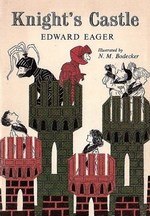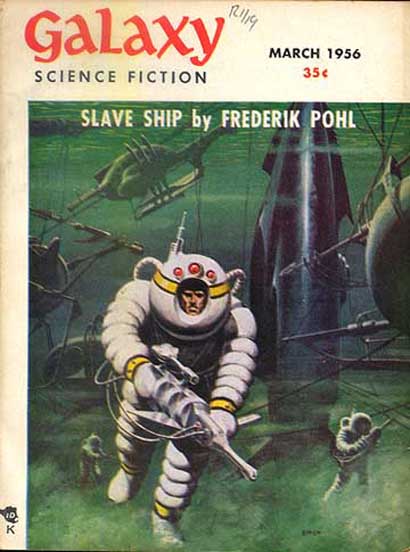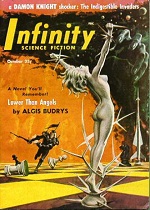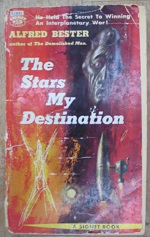|  
 
 | | | | 

| | Tales of Magic #2
Knight’s Castle
by Edward Eager
First publication: Feb 1956

The children of the first book are now grown up, but Martha and her husband have children of their own, Roger and Ann, who spend a summer with their cousins Jane and Mark (sprung from Katharine). It was that summer that the oldest of Roger’s toy soldiers came to life and took them all to the age of Robin Hood, Ivanhoe, chivalry, and knights. It happened just the other day, to a boy named Roger. It happened just the other day, to a boy named Roger.
 Most of it happened to his sister Ann, too, but she was a girl and didn Most of it happened to his sister Ann, too, but she was a girl and didn

t count, or at least that

s what Roger thought, or at least he thought that in the beginning.
 Part of it happened to his cousins Jack and Eliza, too, but they didn Part of it happened to his cousins Jack and Eliza, too, but they didn

t come into it till later. 
| |
| | | | |

 
 | | | | 

| |  | Reggie Rivers #1 | | |
“A Gun for Dinosaur”
by L. Sprague de Camp
First publication: Galaxy, Mar 1956

Dinosaur hunters Reggie Rivers (no relation to the Denver Bronco) and his partner, the Raja, organize time-travel safaris in a world with a Hawking-style chronological protection principle.

In 1992, Silverberg asked de Camp to provide one sequel to the by-then classic “A Gun for Dinosaur.’ De Camp complied and used it as a springboard to write seven more stories over the next year. All those stories plus the original Reggie River adventure were published together in the 1993 collection Rivers of Time. After de Camp’s death, Chris Bunch wrote a tenth story as a tribute to the master. Oh, I’m no four-dimensional thinker; but, as I understand it, if people could go back to a more recent time, their actions would affect our own history, which would be a paradox or contradiction of facts. Can’t have that in a well-run universe, you know. Oh, I’m no four-dimensional thinker; but, as I understand it, if people could go back to a more recent time, their actions would affect our own history, which would be a paradox or contradiction of facts. Can’t have that in a well-run universe, you know. 
| |
| | | | |

 
 
 
 
 
 
 
 
 
 
 
 | | | |  | | “Hopper”
by Robert Silverberg
First publication: Infinity Science Fiction, Oct 1956

I haven’t yet read this short story that Silverberg expanded to a novel in 1967, though perhaps some day I will spot the Ace Double paperback that packaged it along with four other stories and the short novel, The Seed of Earth. | |
| | | | |

 
 | | | | 

| | The Stars My Destination
by Alfred Bestor
First publication: Galaxy, Oct 1956—Jan 1957

Even before I found Asimov and Heinlein and other books with space ships on the spine in the local library, I stole this paperback from my dad’s shelf aroudn 1964. As you can see from the picture, it had an irresistible cover (yes, that’s the stolen copy).

For the most part, Bestor’s story has jaunting (teleportation through space) with no time travel, which is enough to cause plenty of excitement for Gully Foyle (aka Geoffrey Fourmyle) as he jaunts around the war-torn solar system, seeking revenge on various space merchants. But at one climactic point, he also manages a jaunt through time. And then he was tumbling down, down, down the space-time lines, back into the dreadful pit of Now. And then he was tumbling down, down, down the space-time lines, back into the dreadful pit of Now. 
| |
| | | | |

 
 
 
 
 
No Time Travel. Move along. |
The Crossroads of Time by Andre Norton [parallel universes ]

The World Jones Made by Philip K. Dick [precognition ]

“The Minority Report” by Philip K. Dick, Fantastic Universe, Jan 1956 [precognition ]

“A Question of Time” by Edmund Cooper, Fantastic Universe, May 1956 [despite title, no time travel ]

“The Waitabits” by Eric Frank Russell, Astounding, Jul 1955 [personal time rate differences ]

Time for the Stars by Robert A. Heinlein, Aug 1956 [time dilation ]

“Time in Advance” by William Tenn, Galaxy, Aug 1956 [despite title, no time travel ]

| |     |